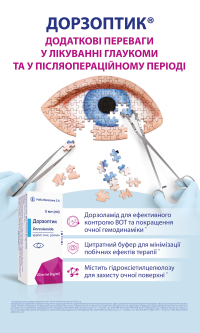Конфлікт інтересів
РОЗКРИТТЯ ФІНАНСОВИХ І НЕФІНАНСОВИХ ВІДНОСИН І ДІЯЛЬНОСТІ, А ТАКОЖ КОНФЛІКТІВ ІНТЕРЕСІВ
(При складанні цих вимог були враховані «Рекомендації по проведенню, опису, редагуванню і публікації результатів наукової роботи в медичних журналах» (2019), розроблені Міжнародним комітетом редакторів медичних і біомедичних журналів (International Committee of Medical Journal Editors – ICMJE).
Суспільна довіра до наукового процесу та достовірність опублікованих статей частково залежать від прозорості конфлікту інтересів на етапах планування та проведення дослідження, а також написання, рецензування, редагування та публікації статті.
Конфлікт інтересів виникає у випадках, коли професійні судження щодо основного з інтересів (наприклад, благополуччя пацієнтів або достовірності наукового дослідження) можуть підпадати під вплив другорядного інтересу (наприклад, фінансової вигоди).
Прикладами конфлікту інтересів можуть бути фінансові взаємовідносини (наприклад, робота за наймом, консультування, акціонерна власність або опціони, гонорари, патенти або оплачувані експертні оцінки), особисті відносини і суперництво, конкуренція в академічному середовищі і інтелектуальні переконання.
Авторам необхідно уникати складання угод зі спонсорами – як комерційними, так і некомерційними, які обмежують авторам доступ до всіх даних дослідження, їх аналізу та інтерпретації, а також перешкоджають підготовці і публікації рукопису з незалежним вибором часу і місця публікації.
Автори повинні враховувати і розкривати свої відносини з іншими зацікавленими особами в процесі публікації статті. При подачі будь-якого рукопису автори несуть відповідальність за розкриття всіх відносин і дій, які могли б вплинути на їх роботу.
При поданні рукопису
ОЖ ФОРМА РОЗКРИТТЯ ІНФОРМАЦІЇ - заповнює автор-кореспондент
При поданні рукопису, автор-кореспондент заповнює форму «РОЗКРИТТЯ ФІНАНСОВИХ ТА НЕФІНАНСОВИХ ВІДНОСИН ТА ДІЯЛЬНОСТІ, А ТАКОЖ КОНФЛІКТІВ ІНТЕРЕСІВ», в якій він включає інформацію про будь-які фінансові відносини (протягом останніх 12 місяців) з будь-яким виробником біотехнологій, фармацевтичною компанією або іншою комерційною структурою, що має інтерес до предмета чи матеріалів, що обговорюються у рукописі. ЗАВАНТАЖИТИ ФОРМУ
ICMJE ФОРМА РОЗКРИТТЯ ІНФОРМАЦІЇ - заповнює автор, який має конфлікт інтересів
ICMJE ФОРМА РОЗКРИТТЯ ІНФОРМАЦІЇ заповнюється кожним автором, який має обставини, що можуть представляти справжній та/або потенційний конфлікт інтересів. Якщо автор не має подібних обставин, цю форму заповнювати не треба. ЗАВАНТАЖИТИ ФОРМУ
В тексті статті
В тексті статті в розділі ВІДОМОСТІ ПРО АВТОРІВ ТА РОЗКРИТТЯ ІНФОРМАЦІЇ, відповідно до форми «Розкриття фінансових та не фінансових відносин та діяльності, а також конфліктів інтересів», автор-кореспондент включає інформацію про будь-які фінансові відносини (протягом останніх 12 місяців) з будь-яким виробником біотехнологій, фармацевтичною компанією або іншою комерційною структурою, що має інтерес до предмета або матеріалів, що обговорюються в рукописі, (наприклад, робота з найму, консультації, гонорари, володіння акціями та опціони, експертне свідоцтво, отримані чи очікувані на отримання гранти або патенти, роялті), які мали місце протягом попереднього року, незалежно від їхньої потенційної значущості для статті. Також слід зазначити нефінансові зв'язки (особисті, політичні чи професійні), які можуть потенційно вплинути на написання рукопису.
Розкриття інформації зберігатиметься в таємниці, доки рукопис перебуває на розгляді, і не вплине на редакційне рішення. Після того як рукопис буде прийнято до публікації, всі розкриті відомості з'являться у статті як «Конфлікт інтересів» наступним чином:
Приклад 1. Конфлікт інтересів:
Автор А.А. працює консультантом у «Назві організації»;
Чоловік Автора Б.Б. є головою ради директорів "Назва організації";
Автор В.В. отримав грант на дослідження від «Назва організації»;
Автор Г.Г. отримав гонорар за лекції від «Назва організації»;
Автор Д.Д. має патент на «Назва та номер патенту»;
Автор Є.Є. отримав компенсацію від «Назва організації» за участь у кількох конференціях;
Автор Ж.Ж. отримав гонорар за написання рекламних матеріалів для «Назва організації»;
Автор З.З. немає конфлікту інтересів.
Приклад 2. Конфлікт інтересів:
Автори засвідчують про відсутність конфлікту інтересів, які б могли вплинути на їх думку стосовно предмету чи матеріалів, описаних та обговорених в даному рукопису.









